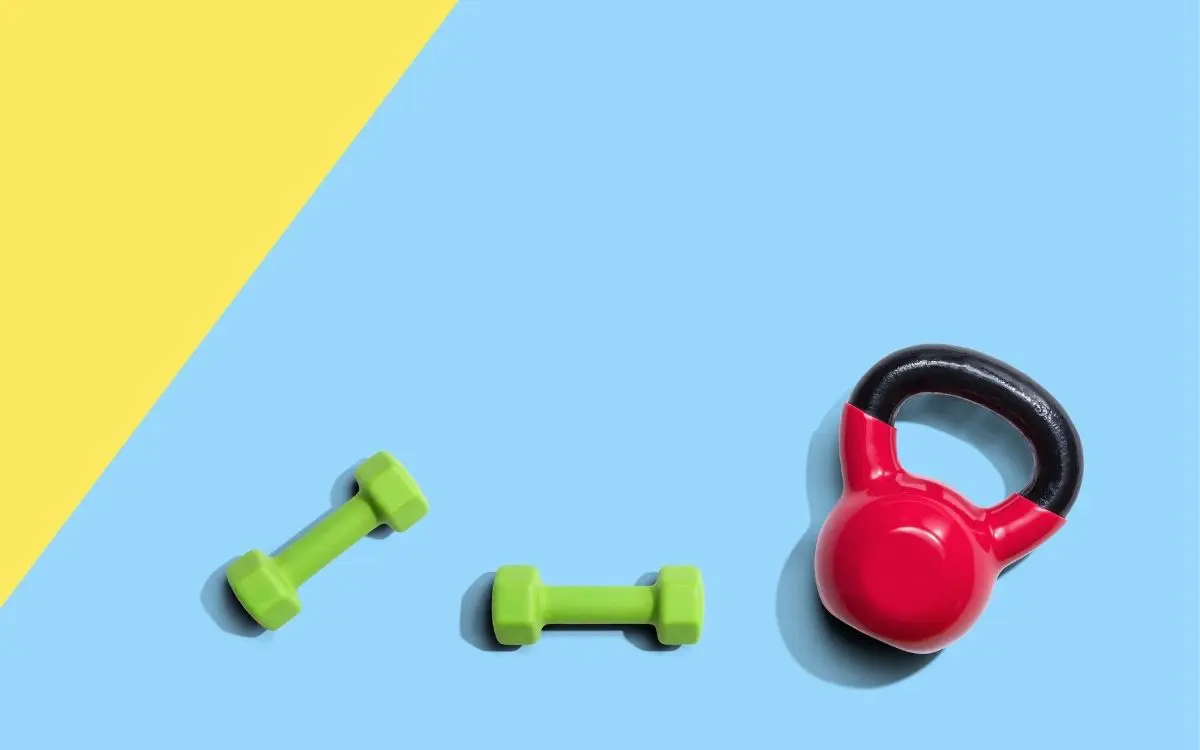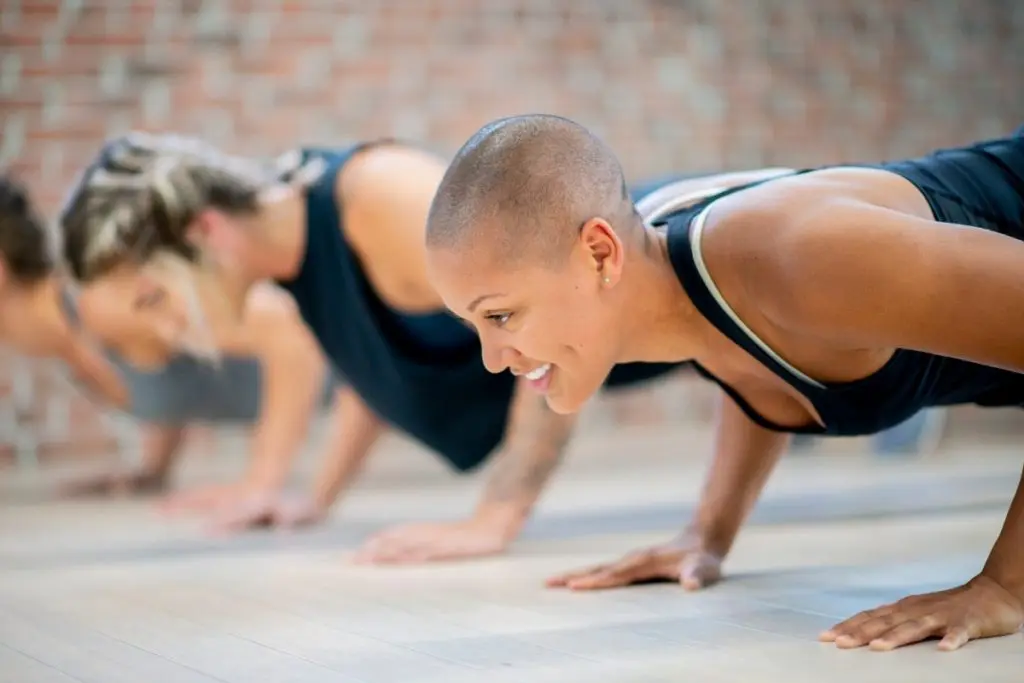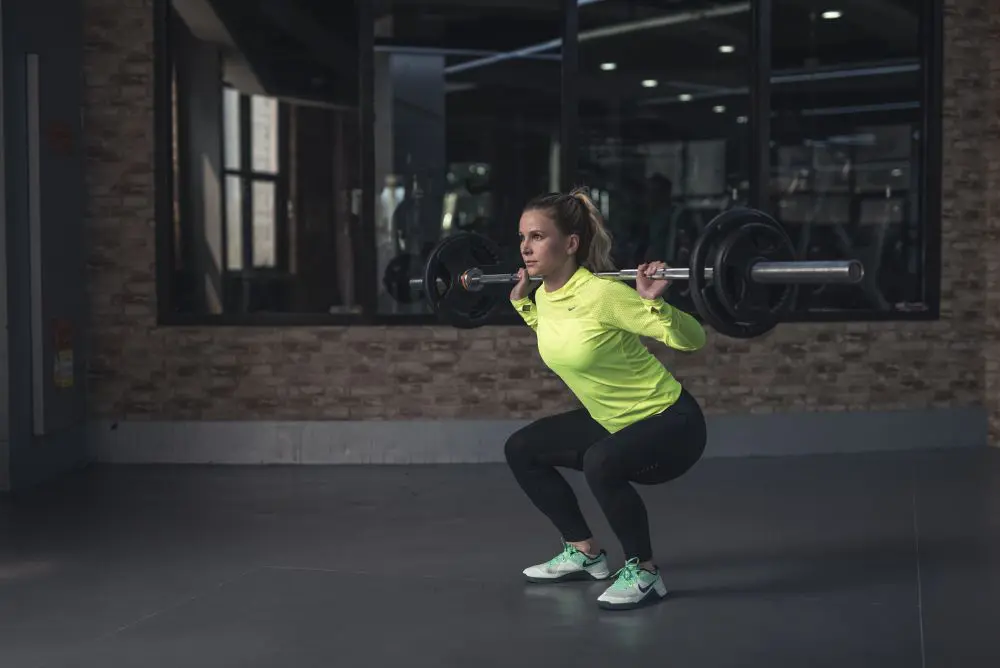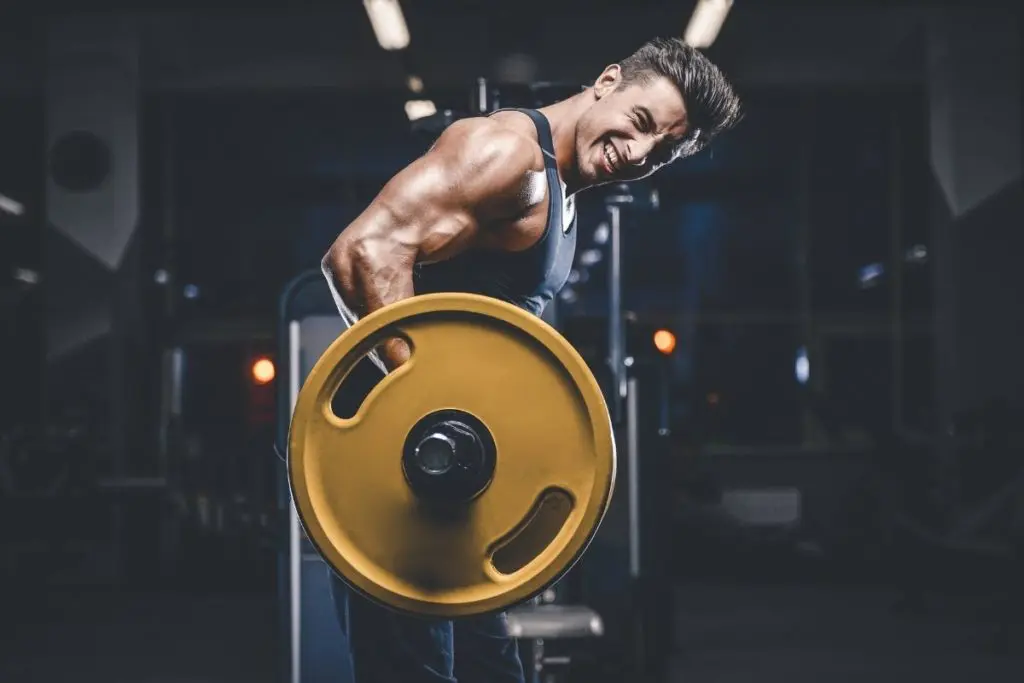You’re ready to pump some iron. That much is certain. But should that iron you pump be a kettlebell or a dumbbell? Look around the gym. You see people using both. But why? Which is better, and how did they choose? Most importantly, which one’s best for you and your fitness goals? Here, we look at the pros and cons of the kettlebells vs. dumbbells discussion.
You’ve asked some of the most common questions for beginners who are just getting started with weightlifting. In this article, we’ll answer these questions and a whole lot more. For now, we’ll say that when it comes to these two popular pieces of workout equipment, it’s not so much about which one is better.
When deciding between the two, it’s better to ask yourself: what are my weightlifting objectives? Dumbbells will help you reach certain goals, while kettlebells are better suited for others.
Before getting into any of that, let’s define what’s similar and what’s different about kettlebells vs. dumbbells. Understanding these differences plays an important part in choosing which one, and what kind of exercises, are right for you and your desired fitness outcomes.
What are the Differences Between Dumbbells and Kettlebells?
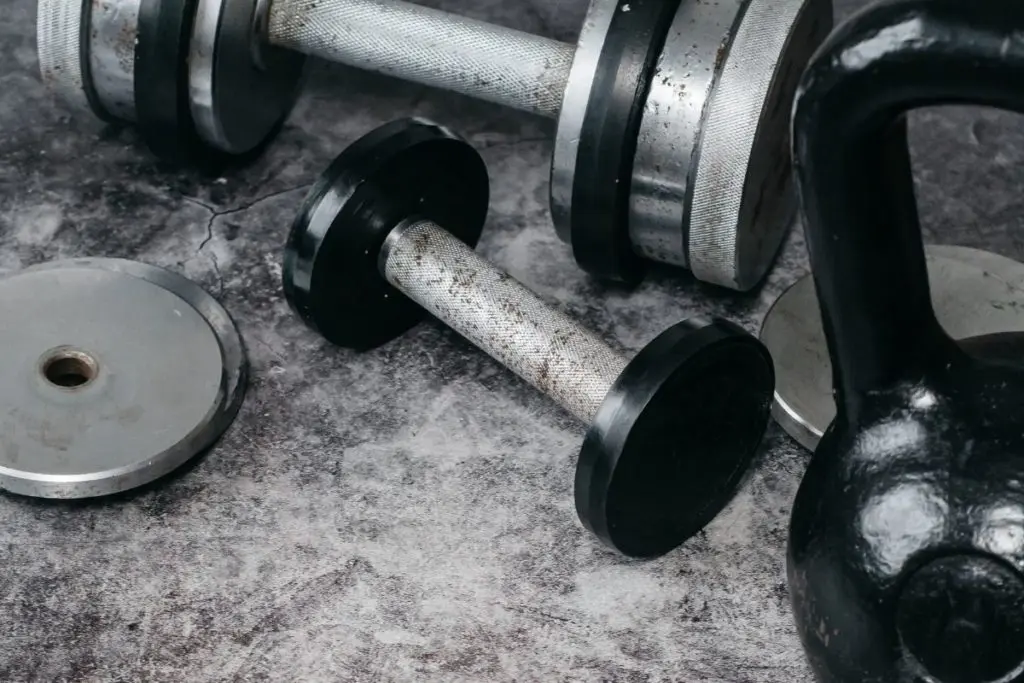
Check the graph below for a quick, side-by-side comparison of what’s different and similar about the kettlebell vs. dumbbell.
| Kettlebells | Dumbbells |
| Can be used with both hands | Meant to be used with just one hand |
| Made from cast-iron | Made from all kinds of things |
| Weight rests below the handle | Weight evenly distributed on either side of the handle |
As can be seen, both kettlebells and dumbbells are ideal for weightlifting. Nevertheless, there are fundamental differences in the size and shape of each that affect the following:
The Center of Mass
Even though you can do some of the same exercises with both kettlebells and dumbbells, given the different center of mass between the two, those exercises will work different muscles and joints with somewhat different results. In other words, performing a specific exercise with a kettlebell will simply build strength differently than the kind of strength built performing the exact same exercise with a dumbbell — an important distinction.
Muscle Activation
Another critical difference between the kettlebell vs. dumbbell rests in the muscles activated while performing an exercise using one or the other. This is related to the different handle configurations. Consider an overhead press. Lifting a dumbbell over your head, with the handle resting squarely on your palm, will work a whole different set of muscles from a kettlebell. Using a kettlebell, with the handle design putting most of the pressure on your wrists, will activate an entirely different set of muscles and stabilizers. That’s even if the weight is otherwise equal.
Lifting for Power
When it comes to a lifter’s power, both kettlebells and dumbbells work pretty well. But to boost power, it takes exercises with a lot of speed and velocity. The fundamental difference in construction between kettlebells and dumbbells gives a kettlebell a slight edge when lifting for power.
Got Cardio?
Generally speaking, it doesn’t really matter if you do a cardio workout with dumbbells or kettlebells. But since cardio most often means doing a series of exercises in quick succession, the handle configuration makes kettlebells a slightly better choice for cardio workouts like kettlebell HIIT training.
So, with all that in mind, which one’s better: kettlebells or dumbbells? The answer to that question is coming up in our next section.
Kettlebell vs. Dumbbell Bodybuilding: Which One’s Better?

When it comes to bodybuilding, you can sum up the reasons to choose a kettlebell instead of a dumbbell workout in the following way:
- Kettlebells exercises tend to be fast, explosive, and better for overall body strength and conditioning.
- Dumbbell exercises, on the other hand, target specific muscle groups like your biceps and triceps, among many others.
So you see, it isn’t really a question of which one’s better. They’re just different. You wouldn’t use a screwdriver to hammer nails, would you? So let’s apply that same concept to kettlebells and dumbbells.
As illustrated earlier, the kettlebell vs. dumbbell are somewhat interchangeable. You can perform certain exercises with one or the other, with pretty similar results. Those exercises include farmer’s walks and one arm rows. The list goes on from there. It’s generally accepted, though, that performing a traditional dumbbell exercise with a kettlebell is more advisable than the other way around. But be aware: just because you’re using a kettlebell doesn’t make it a kettlebell exercise.
To get the full effect of kettlebell and dumbbell workouts, stick to the following exercises:
| Kettlebell-Only Exercises | Dumbbell-Only Exercises |
| Swing | Bicep Curls |
| Snatch | Preacher Curls |
| Clean | Overhead tricep extensions |
There are more where those exercises came from. But with these examples, you get a general idea:
Kettlebell exercises target multiple muscle groups for better overall conditioning, prioritizing explosiveness.
Dumbbell exercises, on the other hand, target and train specific muscle groups. It’s difficult then, to answer which one’s better for bodybuilding because it depends on your objectives.
We say for best results, work a mix of both into your workout!
A point of contention among many weightlifters, though, is whether you can ever do a curl with a kettlebell. Some say “yes,” because kettlebell workouts will build your biceps. Others say never use a kettlebell for curls, for reasons already mentioned. We’ll take a closer look at this disagreement in our next section.
Kettlebell Curls vs. Dumbbell Curls
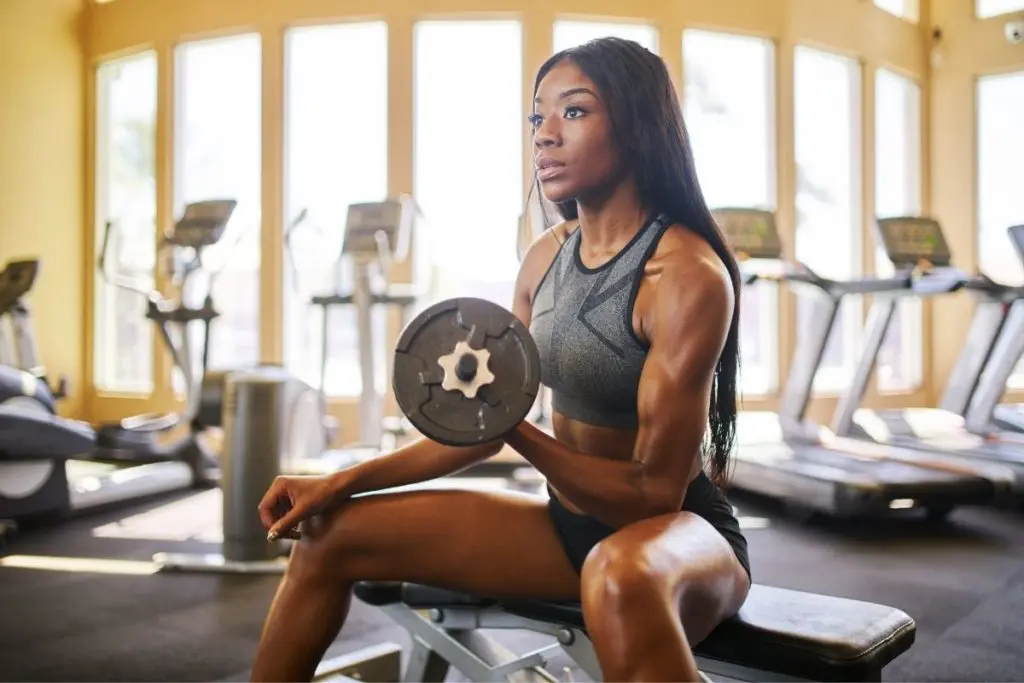
Are kettlebells good for curls? Will kettlebell curls build biceps? Good questions. After all, why do a kettlebell curl when a more appropriate exercise, like a clean curl, will work your biceps, among many other muscle groups? Plus, the basic structure and design of a dumbbell handle is much better suited for the curling motion. Conventional wisdom says: do your curls with a dumbbell. Nevertheless, there are some variations on the curl that are still pretty effective when done with a kettlebell.
Kettlebell Goblet Squat Curls
Kettlebells goblet squat curls work your biceps, no question. Furthermore, they improve hip mobility and the stability of your core. In addition to strong biceps, doing kettlebell goblet squat curls will result in a stronger back, shoulders, and forearms.
Cannonball Preacher Curls
Cannonball preacher curls will improve grip strength, as well as forearms and biceps. Our only recommendation is to start light. These aren’t easy.
Bottoms-Up Kettlebell Cleans
And last, bottoms-up kettlebell cleans. Doing this cousin of a traditional clean, really targets your arms (bi’s, tri’s, forearms, and gripping muscles) while also working your posterior and even your abs.
There are more curl-variations to choose from that are appropriate for a kettlebell, including flexed-hold kettlebell carries and towel-grip kettlebell curls, to name just a few. Although it doesn’t make much sense to do a traditional curl with a kettlebell instead of a dumbbell, try one of these variations, and you’ll develop your biceps and a few other muscle groups while you’re at it. What’s not to like?
Alright, we’ve established curls are (usually) best done with dumbbells. But what about swings, an exercise most often performed with a kettlebell? Is it ever appropriate to try a swing with a dumbbell? We’ll answer that question in our next section.
Dumbbell Swing vs. Kettlebell Swing
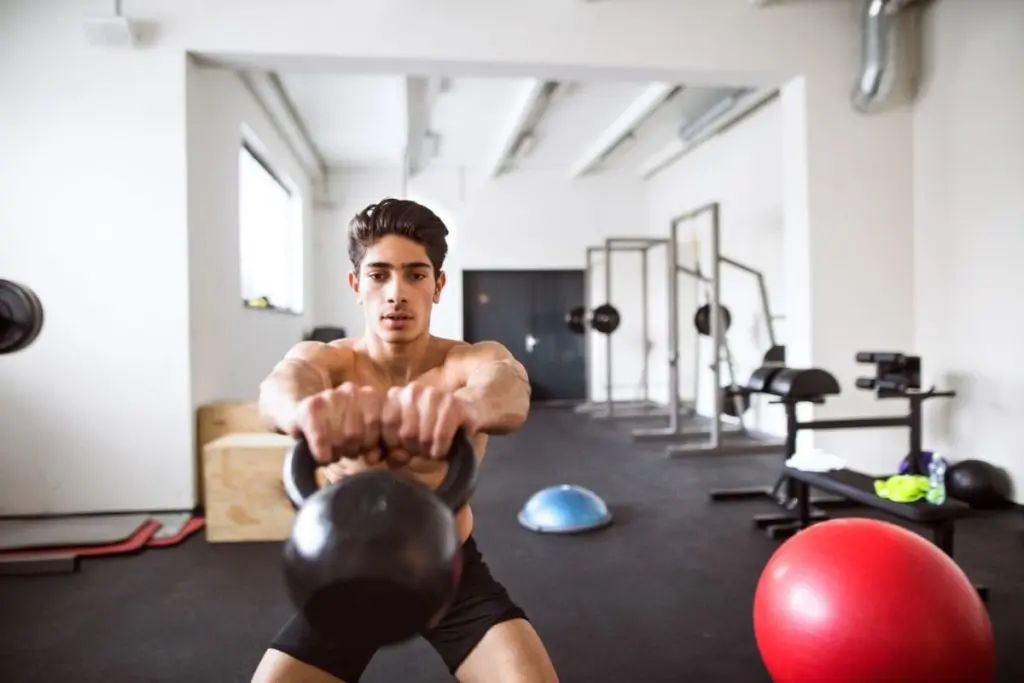
Swings are, in fact, a perfect example of an exercise that’s done just as well with dumbbells vs. kettlebells. Using a kettlebell is preferable but if that’s not possible, try it with a dumbbell for great results, like:
- Improved hip mobility
- Great conditioning and endurance
- Stronger glutes and hamstrings
It’s pretty easy to perform a swing with proper form. Here’s how:
- With a kettlebell between your feet, stand with your feet about shoulder-width apart and bend your knees.
- Keep your back straight, and be sure to maintain “proud chest.” It’s a little bit like proper deadlift form.
- Then, grab the handle of the kettlebell and swing it forward to just below eye-level.
You can think of a swing a little bit like a squat, but on the way up, you’re grabbing the kettlebell and swinging it forward. The reason swings are usually performed with kettlebells is all about that cannonball with a handle design we filled you in on. But swings are just as simple with a dumbbell. Just don’t grab the handle of the dumbbell. Instead, grab the endplate with both hands.
What’s far more important than doing swings with a kettlebell or doing a swing with a dumbbell is to maintain proper form, so start slow and light.
The Heavy Lifting: A Final Word on the Kettlebell vs. Dumbbell
Whether it’s better to use a kettlebell vs. dumbbell is a common question for beginning weightlifters. As we’ve discussed, it isn’t a question of which one’s better. To answer this question, it’s better instead to consider what your fitness objectives are and how kettlebells and dumbbells will help you reach those goals.
Kettlebells and dumbbells have different designs. Kettlebells are sort of like a cannonball with a handle. They are most often meant to be used with both hands. The weight of a dumbbell, on the other hand, rests equally on either side of the handle. In addition, a dumbbell is meant to be gripped with just one hand.
Although you can switch up the two with some exercises, these differences make kettlebells a better choice for quick, explosive exercises. Exercises like these build overall body strength and conditioning. That’s while dumbbell exercises target specific muscle groups. Since the purpose of a curl, for example, is to develop your biceps, it makes sense that doing curls with a dumbbell is a better choice.
Nevertheless, some pretty useful curl variations exist that allow the use of a kettlebell. One example of a common kettlebell exercise that can be done just as well with a dumbbell is called a swing. Just be sure to grab the dumbbell with both hands behind the endplate, rather than holding onto the handle.
In closing, when it comes to the kettlebell vs. dumbbell debate, both should be in the workout of any serious weightlifter. They’re also great for beginners. Mixing up both will play to the strengths of each (not to mention your strengths!) with excellent results.
Experiment with both, and find out for yourself.
Further Reading
